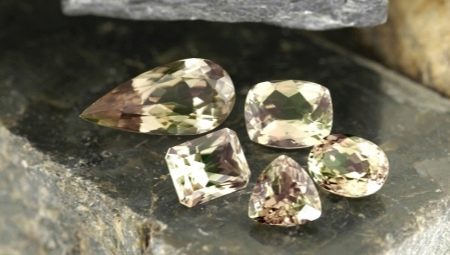Sultanite is a rare gem of extraordinary beauty, with alexandrite effect and fragility. He is able to change color depending on the lighting and collapse during processing from one wrong movement of the master. Jewelry and healing properties of the mineral have found many fans around the world. Not only jewelry, but also individual natural crystals have value.

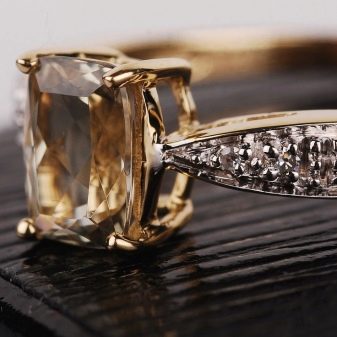
Origin history
There is a version that began to extract sultanite in Turkey. The name itself suggests that only rulers, nobles and very rich people of the East could afford jewelry from the most beautiful bright iridescent stone. Legend has it that the sultans wore rings with a Turkish stone, adorned their clothes. State seals were cut from the mineral. Sultanite jewels were presented as gifts to wives and concubines.
However, it is reliably known that the first deposits of stone were discovered in Russia in the 18th century near the Ural village of Kosoy Brod. When mining iron ore, a stone hitherto unknown that was called ferruginous kyanite attracted attention. Russian scientist Joseph Tanatar engaged in the study of the mineral and compiled its description. From here came the second name of the mineral - tanatarin.
Due to its fragility and difficulty in processing, the Russian mineral was unsuitable for jewelry.
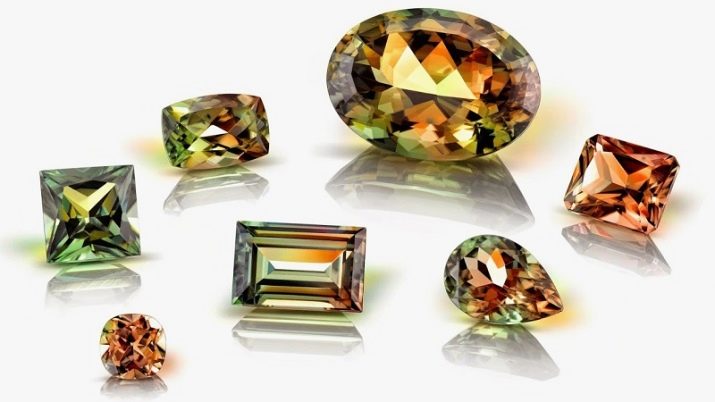
Together with the Ural gems, the stone fell into Europe in the hands of the French geologist Renee Juste Gayui. For the ability to crack during heating, he christened it the Diaspora from the ancient Greek “crumbly”.This name has taken root and became official for the mineral.
The stone would have remained the property of mineralogue collectors if in the 70s of the last century in the Turkish mountain region of Anatolia did not find samples of the diaspora of extraordinary beauty, which has high jewelry value. The stone began to be smuggled out, and there was no legal commercial extraction. Having obtained mining rights and an export license, Millennium Mining Co has become the only supplier of jewelry diaspora in the world. The stone owes its commercial name "Sultanite" or "Sultanite" to the founder of Murat Akgun. Thus, he wished to pay tribute to the memory of the glorified dynasty of 36 sultans, who ruled in Turkey from the XIII century.
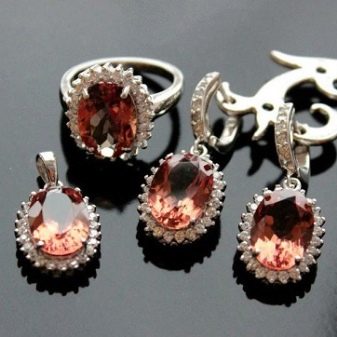
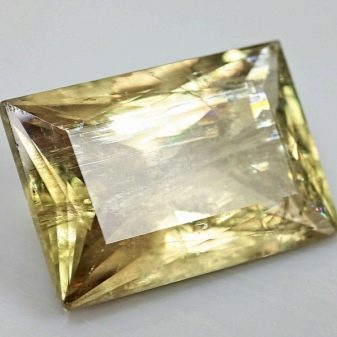
Where is it mined?
The most beautiful and high-quality gem for jewelry purposes is mined, as before, in Turkey. The largest field is located high in the Anatolian mountains near the village of Selimiye. Mining is difficult due to the fragility of the stone. According to statistics, only 2% of the gems mined become jewels. The rest crumbles during processing. In faceting, you can get sultanite up to 25 carats. Turkish authorities keep the information about the reserves of sultanite in the strictest confidence, so the purchase of a rare stone is considered a good investment. Minerals from Asia, Africa and Europe are significantly inferior in quality to Turkish, but are also applicable in jewelry as inserts in jewelry.
In Africa, the mineral is mined in the Kalahari Desert and Madagascar. In Europe, small deposits are developed in Hungary and Norway. The birthplace of American stones is Massachusetts. There are Australian, Uzbek, Azerbaijani, Chinese minerals. In Russia, diasporas are mined in the Urals in the Saranovsky and Kosobrodsky deposits, as well as in Yakutia. Due to their opacity, these minerals do not represent jewelry value.


The properties
Consider the main characteristics of the mineral.
Physicochemical
Sultanite is quite rare and incredibly beautiful. stone.
- Chemical composition. Diaspora is a natural alumina oxyhydrate combining 85% alumina and 15% water. It is water ions that are responsible for the fragility of the stone. Blotches of chromium, gallium, iron, lead in different proportions can also be found in the mineral.
- Color. There is a stone of white, yellow, gray, pink, violet colors with glass and pearly shine. The rays of light falling on the sultanite determine its color at one time or another. For this quality he was dubbed a chameleon stone. In bright artificial light, it acquires an amber, yellow color. In the sun - grassy green. In low light, it becomes pale green or brown.
- Hardness. From 6.5 to 7 units on the Mohs scale. Density - 3.2-3.5 grams per cubic centimeter
- Transparency. There are transparent and translucent stones.
- Characteristic of crystals. Lamellar are found most often. Needle and columnar crystals are less common.
- The type of symmetry is rhombic.
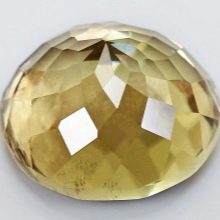
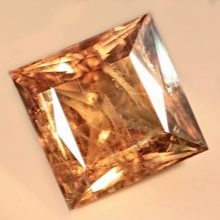
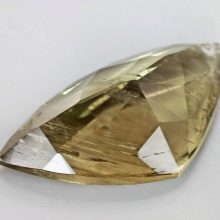
Medical
The healing properties of sultanite have not been proven by science. It is believed that the mineral can contribute to recovery from colds, pain in the spine, heart and blood vessel diseases, disorders of the psycho-emotional state, and depression.
Lithotherapists recognize the properties of an indicator of human health as a stone. The stone grows dull, loses its radiance if the owner becomes ill. If the disease is not treated, it may crack and crumble.


Magical
Peaceful joyful attitude towards life brings a stone to his happy to the holder:
- creative person it gives inspiration and lightness;
- sage, teacher, philosopher - the ability to focus and find solutions to serious problems;
- clairvoyant healers - strengthening of intuition and the development of extrasensory abilities.
The mineral gives its owner strength and faith in himself, gives energy to start a new business and bring it to the end, protects against the influence of energy vampires, helps to prevent quarrels, disagreements, and is simply able to cheer you up.


Sultanite attracts to its owner the benevolent attitude of others. The stone is equally loved by both women and men. It helps women to remain calm and sound mind in various situations, and gives the strong half of humanity the strength of mind and intuitive abilities. It is believed that the happiest and most positive energies bring stones weighing 5.55 or 7.77 carats.
Particular magical significance is attached to the gem of the fortuneteller and the seer. With the help of the diaspora, they predict the future. First, crystals give hold to the client in his hands. Then they throw on hot coals. The future is read through the cracks and remains of the stone after the ritual.

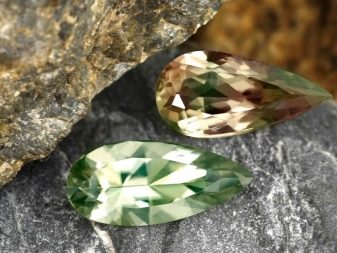
Varieties
The impurities that make up the stone determine its color.
There are three varieties of sultanite on this basis:
- colorless, pink (admixture of manganese);
- yellow-brown, amber color (admixture of iron);
- green (admixture of chromium).
According to the quality of the stone, its deposit and its scope, they distinguish:
- Zultanite is a stone of Turkish origin of the highest jewelry quality;
- thanatarite - a two-colored mineral mined in Russia;
- Diasporas - the most fragile mineral, is destroyed by high temperatures.

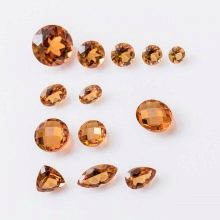

How to distinguish from a fake?
Experts say that it is impossible to fake sultanite. However, hydrothermal sultanite can be found on sale. This is the name of the artificially grown mineral. Due to the increased demand for a rare stone with unique properties, Turkey began to synthesize a gem. By its properties, it does not differ from natural stone, but has a higher strength, and it is easier to process it. In the autoclave at high pressure and a temperature of 280-1000 ° C, the aging process of the alumina hydrate gels is carried out, as a result of which a man-made mineral is born.
On the jewelry tags you can see the names “synthetic sultanite” or “sultanite-glass”. This is an imitation crystal created using the latest technology patented by Russian scientists. It is based on compounds of aluminum oxide and silicon dioxide, to which the components necessary for the production of sultanite-glass metal are added.
Synthesis occurs at a temperature of about 1700 ° C. The artificial stone born in this way has incorporated all the best from natural minerals, eliminating their drawbacks from its properties.
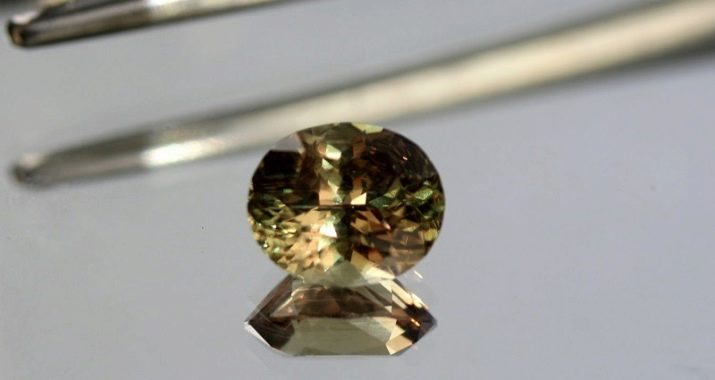
Natural and synthetic minerals have differences in color, the transition from one color to another. But only an experienced specialist is able to notice them. It is impossible for an ordinary buyer to visually distinguish between a semiprecious stone of natural origin and synthetics. If you want to buy natural stone, it is important to remember several factors.
- It’s better to buy a mineral or jewelry in places with a proven high reputation, having documents for every stone.
- Checking quality certificate. Mark "Sultanite g. T." has an artificial stone.
- Look at the prices. Due to its rarity, the mineral is highly regarded. The price of a real natural stone is comparable to the price of a diamond and higher. The cost of synthetic is kept at the level of pomegranate and topaz.
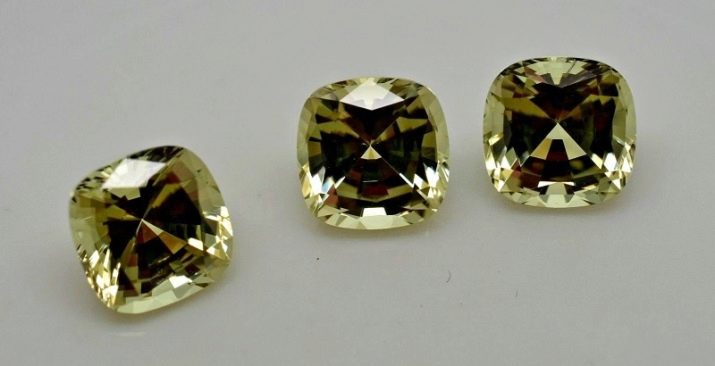
Application area
Jewelers are attracted by the glass luster of the gem. Sultanite of high jewelry quality is used for the manufacture of jewelry: rings, earrings, bracelets, pendants, pendants and their sets. Thanks to its overflow, the jewelry is unusual and exquisite. The brilliant stone adds appeal to women, but it is also loved by men who like rings with this mysterious stone with mystical properties.
Costly specimens are placed in a frame of gold or platinum. Noble stone does not like base materials.It is believed that the jewelers of the East using sultanite verified the authenticity of gold. Near the fake metal, the gem loses its luster, but once it is brought closer to real gold and it shines again.
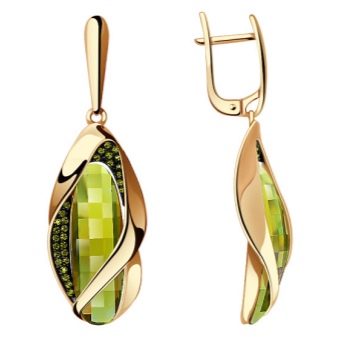
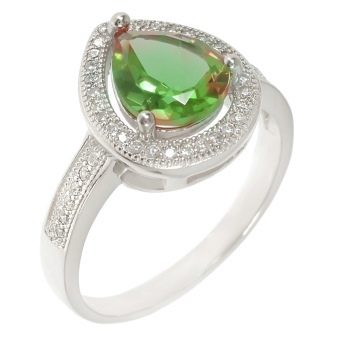
Sultanite, framed by gold, looks perfect with clothes of golden and yellow color. Gives its owner a luxurious royal look. Bright and saturated color of a stone in a rimless product will emphasize monophonic clothes of a cold shade. A gem in a silver frame looks harmonious. Among esotericists, it is believed that silver, purifying the human aura, enhances the magical properties of sultanite. Such jewelry can be wonderful talismans and charms for their owners.
A gem looks good together with white, green, black, transparent stones, such as pearls, diamonds, onyx, as well as blue, blue, and violet (aquamarine, agate, turquoise). Red stones and sultanite are incompatible.
Diaspora, “rejected” by jewelers, is one of the components of aluminum ore, on the basis of which refractory materials are produced.
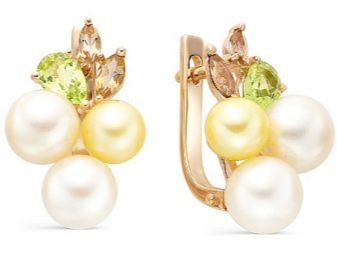
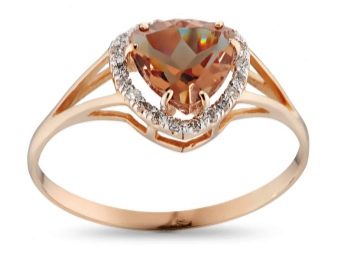
Who is it for?
Sultanite has a very soft positive energy, therefore, suitable for representatives of all zodiac signs. It is believed that the stone has a fiery nature and will bring the greatest benefit to people born under the sign of Aries, Leo and Sagittarius. Sultanite will contribute to them in the development of talents, creativity, improvement of intuition, help to make the right decision, strengthen partnerships, whether friendly, family or romantic.
In second place are earth signs. Taurus, Virgo, Capricorn, the gem will add vitality, emotionality, help implementation in society. Overly practical representatives of the elements of the Earth will teach you how to dream, improve your imagination.


The signs of water of Crayfish, Scorpions, Pisces will protect against negative energy influences, will give strength and confidence to repulse violators of personal boundaries. The life of changeable air signs: Gemini, Libra will make it more defined and stable.
The longer the stone is worn, the brighter is its effect in human life. It should be remembered that the stone is always selected individually. Having preferred your own feelings and emotions when interacting with a stone, you will always make the right choice.


Stone Care
Sultanite is a very fragile stone and requires special attention when cleaning and storing. It should be protected from falls and bumps, even the most insignificant. It is forbidden to subject it to ultrasonic cleaning. From such a procedure, it can exfoliate. Stone should be washed with a mild soapy solution without the use of aggressive chemicals, household chemicals.
To avoid damage, it is advisable to store it separately from other stones in a cell with a soft, dense cloth or in a bag. You can not store jewelry in the bathroom and near heating appliances.

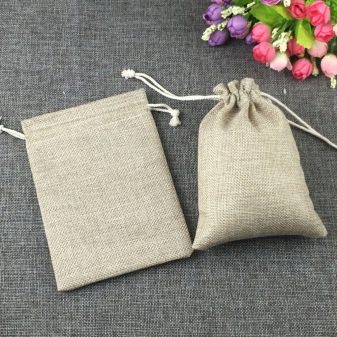
In the next video, the story of the Sultanite.
